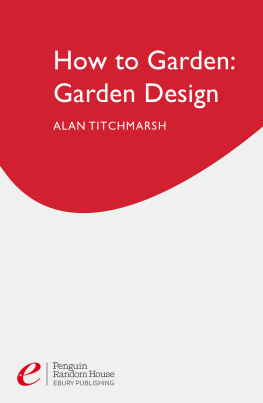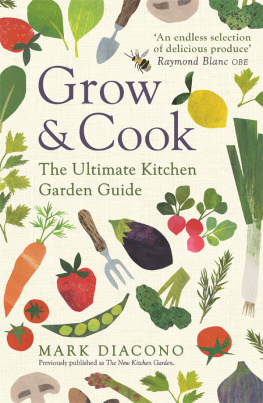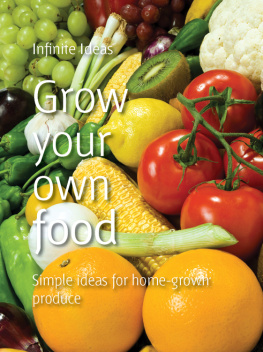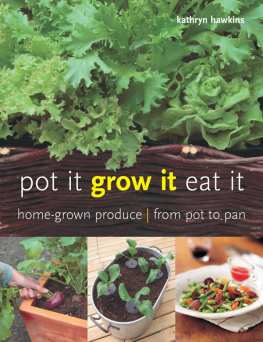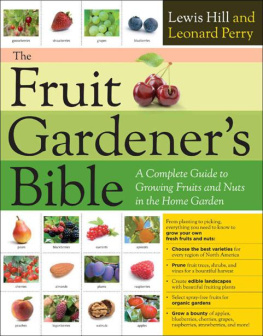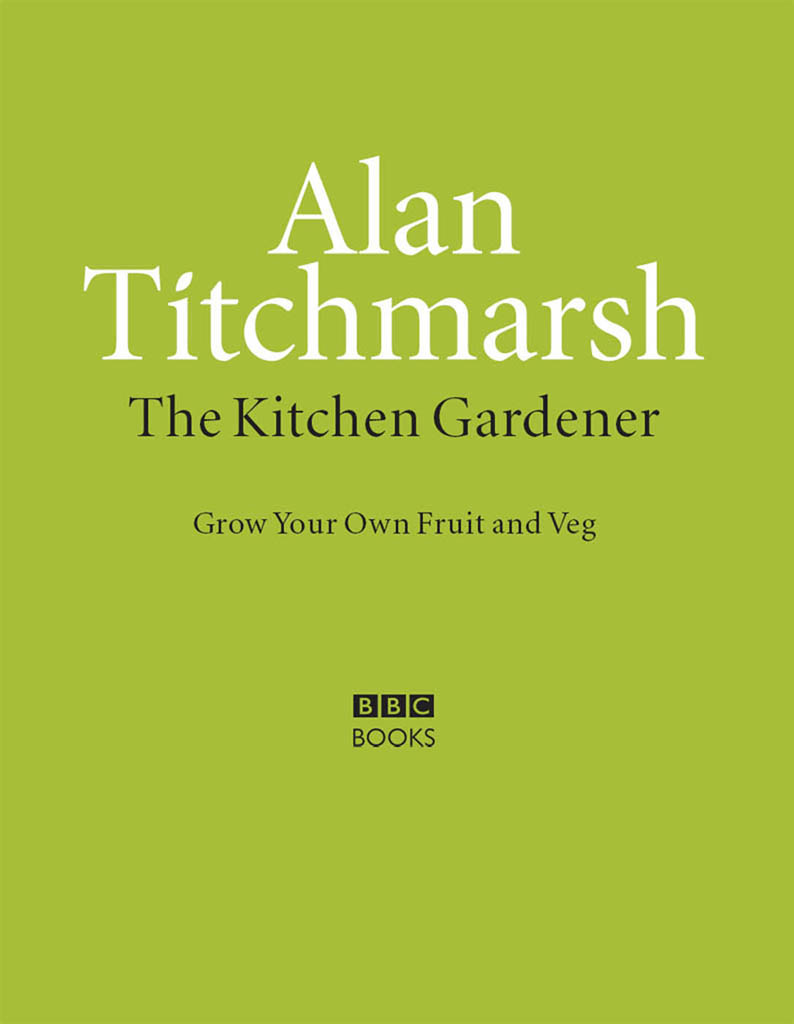CONTENTS
ABOUT THE BOOK
There are many concerns about our fruit and vegetables today everything from pesticides and GM to food miles so, in his timely, definitive new reference, The Kitchen Gardener, green-fingered guru Alan Titchmarsh provides all the information youll need to enjoy the rich rewards of home produce from your own vegetable plot, allotment, patio or even window box.
Alans passion for gardening and years of experience growing a huge variety of edibles bear fruit for everybody to share in this one complete volume. Divided into two sections The Ground Rules, which sets out essential guidelines for any successful crop, and a Directory, which provides detailed A-Zs of fruit, veg and herbs The Kitchen Gardener starts from scratch, but is also ideal for those with some experience who might be growing edibles in a new way, perhaps in a small space that needs to look attractive, or on a new allotment.
Lavishly illustrated throughout with hundreds of photographs and artworks, The Kitchen Gardener offers inspiration, authoritative in-depth knowledge and practical know-how. Whether you are looking to be self-sufficient, or just to grow a few herbs in a container, Alans comprehensive guide is the essential companion.
ABOUT THE AUTHOR
Originally trained at Hertfordshire College of Horticulture and Royal Botanic Gardens, Kew, Alan Titchmarsh has enjoyed a long career as a gardener, broadcaster and writer. He is the author of over 40 books about gardening, including How to be a Gardener: Back to Basics, the fastest-selling of all time in the genre. He also writes regularly in Gardeners World magazine, is gardening correspondent for the Daily Express and Sunday Express and, in addition to all this, is a bestselling novelist. Plus, of course, Alan is a frequent broadcaster on radio and television, presenting a number of popular high-profile series ranging from Gardeners World to The Nature of Britain. He lives in Hampshire.
WHY GROW YOUR OWN?
Growing your own has never been more popular, more possible, more fashionable or more fun than it is today. All sorts of people are jumping on the bandwagon, and there are lots of good reasons why.
Some are embracing growing their own for the health benefits. Fresh fruit and vegetables provide fibre, antioxidants and also vitamins and minerals which, its thought, do you more good when they come from fresh ingredients than from a jar of pills. We are all encouraged to eat at least five portions of fruit and veg every day, and a real health-buff would try to incorporate all the various colours red, green, purple and orange or yellow to be sure of topping-up on the full range of natural plant phytochemicals that are natures disease-busters.
If you grow your crops organically which you really should, because theyll taste better youll be avoiding having pesticides in your food, too. Dont overlook the benefits of the good all-round physical work out that fruit-and-veg gardening gives either; its great for toning and tightening natures baggy bits, and the fruits of your labours are low calorie. Who needs the gym when youve got a productive kitchen garden?
Some people grow their own to save money, and certainly if you go in for cultivating crops which are expensive to buy in the shops, such as asparagus, artichokes and soft fruit, you can make some very worthwhile savings. But think of the convenience too; for anyone who works late or lives miles from the shops its handy to have a well-stocked, living larder in the garden. Managed carefully, you can have something tasty and fresh available all year round, without needing to fall back on the freezer or phone for a pizza.
For some people, growing their own food is a quality-of-life thing; its an activity that the whole family can do together on summer evenings or at weekends. Allotment gardening has really taken off in recent years, and in many cases its young families and professional people whove swelled the ranks of folk who are found pottering away on their plots. These same people to whom quality of life is important are also often those who are concerned about the environment and want to do their bit for the cause. They appreciate that growing your own is good for the planet and global warming; since it cuts down food miles, reduces the use of fossil fuels and lets you recycle rubbish that might otherwise end up in landfill sites.
Then, of course, there are the food fanciers. Anyone whos serious about good food very often falls into growing their own so that they can enjoy fresh produce while its really fresh not fresh from a plastic bag full of gas, or pre-prepared so that half the flavour has leaked out or dried up. And its a great way of sourcing special ingredients that you cant easily find in the shops such as fresh kaffir lime leaves or exotic species of Thai basil. For foodies the big buzz is currently for fresh local produce, and it doesnt come any more fresh or local than from your own plot with the dirt still on.
Although this isnt a cookery book, I couldnt miss the opportunity to pass on a few of my favourite ways of using garden crops. When you grow your own fruit and veg its almost impossible not to be interested in the way that you cook and eat them and, however well you plan, youll usually end up with a surplus of certain crops at plentiful times of year. To my mind its far better to have a few recipes that really make the most of this glut instead of just shoving it all in the freezer, which I reckon should be a last resort.
So take up the spade and put aside your worries; youre unlikely to regret it.
Growing your own has never been more popular, more possible, more fashionable or more fun than it is today.
The Ground Rules
Now, I dont mean to tub-thump, but when your time and space are valuable which they are for everyone these days theres no point in taking a leave it to nature approach to kitchen gardening. Its not like digging a hole and bunging a shrub in. No, you need to be much more hands-on with fruit and veg it demands regular, on-going commitment and attention to detail. But that doesnt mean you have to slave away all hours on your plot; it pays to get right some key points, then you only need spend time and effort where it counts most in order to produce real results.
So thats what Im going to emphasize in this book. Where people usually go wrong is that they take on far more than they can manage then cant keep up with the work. The result is that their crops are ruined and their time has been wasted. If you were to ask me for my top kitchen-gardening tip, Id say that youd do far better to grow half the amount, but grow it twice as well.
SITE AND SITUATION
To produce a good, healthy crop, fruit, vegetables and herbs need to grow fast and steadily, without any setbacks. Good growing conditions are vital for a kitchen garden, so choose a reasonably sunny but sheltered situation with well-drained ground thats in good heart. (This is gardener-speak for healthy, fertile soil thats chock full of well-rotted organic matter and which is brimming with worms, beneficial bacteria and natural nutrients.) Chill winds, heavy shade or soil that becomes waterlogged periodically or dries right out, all spell disaster for your harvest.
Next page



